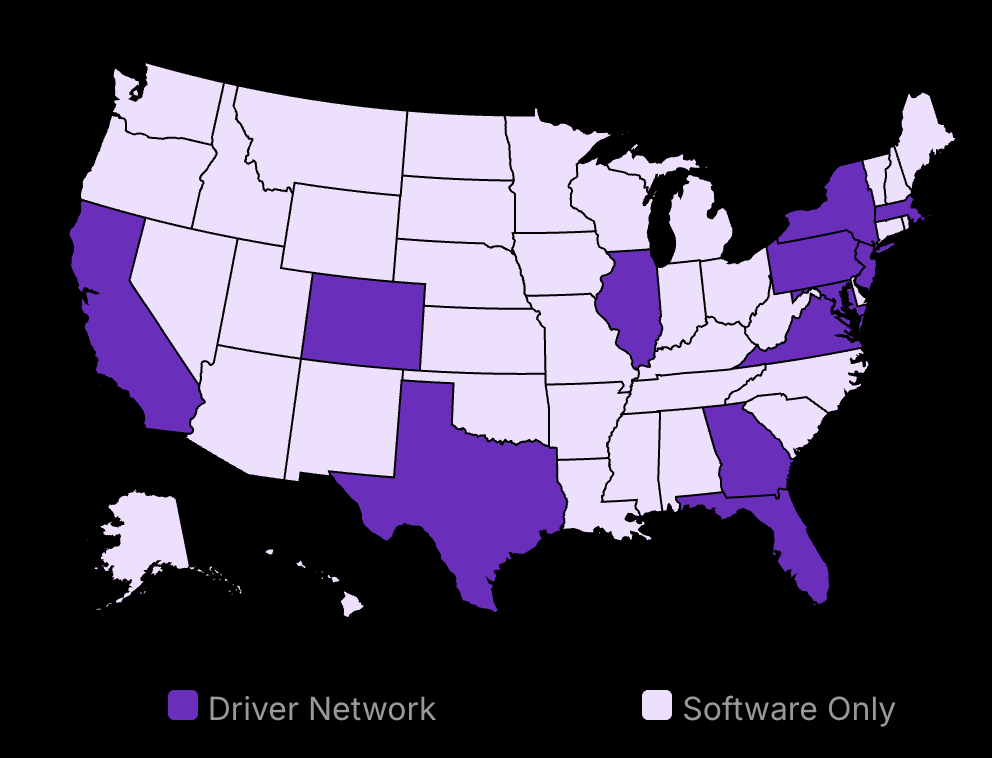Looking to make smarter financial decisions for your business? These five research-backed insights will help you conduct more effective cost-benefit analyses. Cost-benefit analysis remains fundamental to business decision-making, but recent research has uncovered key improvements to traditional methods. Let’s examine what the data tells us about maximizing this essential business tool.

Save 80% of delivery management time
We handle everything:
- Dedicated operations manager
- Real-time tracking dashboard
- Automated customer notifications
- Urgent issue resolution
1. How can we use cost-benefit analysis to make better decisions?
Cost-benefit analysis transforms complex choices into clear financial comparisons.
Provides a structured framework to evaluate both immediate and long-term impacts.
Helps businesses avoid emotional decision-making by focusing on quantifiable data.
Cost-benefit analysis (CBA) stands as one of the most practical tools in business decision-making. At its core, CBA offers a systematic approach to evaluate whether a planned action, or a new project, is worth pursuing by weighing financial and non-financial benefits against costs. For businesses facing limited resources and multiple competing opportunities, this analysis provides a clear path through uncertainty and aids in project planning. The strength of this approach lies in its ability to transform subjective judgments into objective measurements that can be compared across different options for any project or business initiative. Undertaking a better cost benefit analysis can improve the financial feasibility of ventures.
1. Understanding the Basics of the Cost-Benefit Analysis Process
Cost-benefit analysis represents a systematic process of calculating and comparing the benefits and costs of a decision, policy, or project. The concept dates back to 1848 when French economist Jules Dupuit first formalized the process to evaluate public works projects. Today, businesses of all sizes use CBA as a cornerstone of rational decision-making.
The basic formula is straightforward: if future benefits outweigh costs, the decision may be worthwhile. However, proper implementation requires careful consideration of several factors:
Direct costs: Expenses directly tied to the project (equipment, materials, labor), which are often fixed costs.
Indirect costs: Overhead, opportunity costs, potential risks. These also form part of all the costs.
Tangible benefits: Revenue increases, cost savings, productivity improvements, which often include direct benefits.
Intangible benefits: Enhanced brand reputation, improved employee satisfaction, better customer experience. These are part of intangible costs considerations if not achieved.
The process forces decision-makers to consider all aspects of a business choice rather than relying on gut feeling or past experiences alone. When considering costs versus benefits, it’s important to identify costs accurately.
A key distinction in CBA is between financial and economic analysis. Financial analysis focuses on cash flows directly affecting the organization, while economic analysis considers broader impacts including external stakeholders. For example, a manufacturing company might include environmental impacts in their analysis even when these don’t directly affect their bottom line.
When to Apply Cost-Benefit Analysis
Not every business decision requires a full CBA. The technique proves most valuable for:
Major capital investments with significant financial implications.
Strategic initiatives with long-term impacts.
Choices between mutually exclusive alternatives.
Situations where resources are particularly constrained.
Regulatory compliance decisions.
Purchase decisions deciding on significant acquisitions.
For smaller decisions with limited impacts, simplified versions of the analysis may suffice. The depth of analysis should match the significance of the decision at hand.
Project Budget Overruns: The average IT project overruns its budget by 27%, with one in six projects experiencing a 200% cost overrun and a 70% schedule overrun.
2. Identifying Business Scenarios: A Cost Benefit Analysis Example
Cost-benefit analysis applies across virtually all business functions and industries. Its versatility makes it valuable throughout an organization’s operations and strategic planning processes.
In product development, CBA helps evaluate whether to launch new offerings by comparing development and marketing costs against projected revenue and market share gains. Apple reportedly uses sophisticated benefit-cost models when deciding which features to include in new iPhone generations, weighing manufacturing costs against consumer willingness to pay.
For infrastructure investments, the analysis might span decades. When Amazon evaluates new fulfillment center locations, they conduct extensive cost-benefit analyses considering factors like land costs, tax incentives, labor availability, and proximity to customers.
Mergers and acquisitions represent another critical application. When Microsoft acquired LinkedIn, extensive cost-benefit analysis projected synergies, market positioning benefits, and revenue growth opportunities against the purchase price and integration costs.
Even human resource decisions benefit from this approach. Google’s famous data-driven HR practices include cost-benefit analyses of employee benefits, calculating the return on investment for each wellness program and perk by measuring impacts on productivity, retention, and recruitment costs.
Case Example: Tesla Gigafactory Decision
Tesla’s decision to build its first Gigafactory provides an instructive case study in benefit cost analysis. The company faced the choice of continuing to source batteries from suppliers or vertically integrating production at enormous upfront cost.
The cost side included:
Significant construction and equipment costs.
Years of negative cash flow during construction.
Significant technical and operational risks. This is an example of how expected costs should be reviewed.
Benefits included:
Projected reduction in battery costs.
Supply chain security for critical components.
Ability to scale production for multiple vehicle models.
Technological advantages from manufacturing innovation.
Tesla’s analysis determined that despite the massive upfront investment, the long-term benefits justified the project. This decision is expected to have saved the company substantially in battery costs while providing strategic advantages.
3. Calculating Cost and Benefits to Assign Monetary Values
The quality of a cost-benefit analysis depends entirely on accurate identification and valuation of all relevant factors. This represents the most challenging aspect of the process for many organizations. Complete cost identification requires systematic thinking about both obvious and hidden expenses, including all the associated costs:
Initial investment costs (equipment, real estate, technology)
Ongoing operational costs (staffing, maintenance, utilities)
Transition costs (training, productivity losses during implementation)
Decommissioning costs (disposal, environmental remediation)
Opportunity costs (what could be done with the same resources)
Risk-adjusted costs (potential overruns, delays, failures)
Benefit calculation presents even greater challenges, particularly for intangible outcomes. A new business process might have several such benefits.
When calculating benefits, organizations should consider:
Direct revenue increases
Cost savings and efficiency gains
Quality improvements
Risk reduction values
Strategic positioning advantages
Organizational learning value
For hard-to-quantify benefits, techniques like the “willingness to pay” method or comparing against similar investments can provide reasonable estimates. Progressive organizations are increasingly using Monte Carlo simulations to account for uncertainty in both cost and benefit projections. If costs exceed benefits, the project may not be viable.
4. Applying Time Value Principles
A fundamental concept in cost-benefit analysis is recognizing that money received in the future is worth less than the same amount received today. This “time value of money” principle dramatically impacts decisions with multi-year horizons.
To account for this, analysts use discounted cash flow techniques, primarily Net Present Value (NPV) and Internal Rate of Return (IRR). These methods convert future costs and benefits into present-day values using a discount rate that reflects:
The organization’s cost of capital
Inflation expectations
Risk premium for project uncertainty
The choice of discount rate can swing a project’s NPV, making this seemingly technical decision critically important. Companies typically use their Weighted Average Cost of Capital (WACC) as a starting point, then adjust based on project-specific risks. Each dollar value needs to be considered in monetary units appropriate for the analysis.
Beyond simple discounting, sophisticated analyses incorporate sensitivity testing by varying key assumptions. For example, changing the discount rate might reveal that a project’s viability depends heavily on the cost of capital, highlighting a key risk factor. Software tools enable Monte Carlo simulations that produce probability distributions rather than single-point estimates. This approach gives decision-makers a more realistic view of possible outcomes and the likelihood of each scenario.
5. Making the Final Decision
The final step converts analytical results into actionable decisions. While the mathematics of cost-benefit analysis might suggest clear choices, real-world decision-making involves additional considerations. Successful organizations complement quantitative analysis with qualitative judgment. The numbers provide a foundation, but leadership must also consider:
Strategic alignment with organization goals
Resource constraints and competing priorities
Risk tolerance and uncertainty
Stakeholder concerns and political factors
Ethical considerations and social responsibility
This balanced approach prevents over-reliance on pure financial metrics while maintaining analytical rigor for a successful project. For major decisions, creating decision trees with contingency plans based on different CBA scenarios improves implementation success. This approach recognizes that initial assumptions may prove incorrect and builds adaptive capacity into the decision-making process.
Companies that effectively implement cost-benefit analysis typically create cross-functional decision teams that include both financial analysts and operational experts. This diversity of perspective helps identify blind spots in the analysis and increases buy-in for the ultimate decision. The final output should include not just the go/no-go decision, but also implementation guidance based on insights from the analysis. Sensitivity testing often reveals which factors most strongly influence success, helping teams focus monitoring efforts on these critical variables during execution.
Cost-benefit analysis transforms the art of decision-making into a science without removing the essential human judgment component. When properly executed, it enables businesses to make choices grounded in data while still reflecting the organization’s broader values and strategic direction.
2. Why do businesses use cost-benefit analysis?
TL;DR:
CBA creates a clear roadmap for evaluating investments and operational changes.
Helps businesses quantify intangible benefits and avoid emotional decision-making.
Provides documentation that supports accountability and can justify decisions to stakeholders.
Cost-benefit analysis (CBA) serves as the backbone of rational business decision-making in today’s data-driven corporate environment. Organizations ranging from small startups to multinational corporations rely on this systematic approach to evaluate potential projects, investments, and operational changes. By assigning monetary values to both costs and benefits, businesses gain clarity on whether a particular course of action will generate value or drain resources.
The appeal of CBA lies in its ability to transform complex, multi-faceted decisions into comparable numerical values that can be easily communicated across departments and management levels. The formalized nature of CBA also serves as a buffer against personal biases and organizational politics that can otherwise derail sound decision-making. When executives must justify their recommendations based on quantifiable costs and benefits, the focus shifts from who supports an idea to whether the idea itself has merit from a business perspective. This objectivity proves particularly valuable when considering initiatives that might have high upfront costs but significant long-term payoffs; it is a key part of cost effectiveness analysis.
Efficient Cost Management: Companies that engage in benchmarking are generally 79% more efficient in their cost management strategies.
1. Benefit Realization
Benefit realization represents one of the most compelling reasons businesses incorporate cost-benefit analysis into their decision frameworks. Unlike simple financial forecasting, CBA establishes a system to track actual benefits received against those predicted during the planning phase. This tracking function creates accountability and provides valuable feedback on the accuracy of an organization’s predictive capabilities. By implementing robust benefit realization tracking through CBA, businesses can identify these gaps early and take corrective action. The process typically involves establishing clear metrics at the project outset, collecting baseline measurements, and then comparing actual outcomes against projections at regular intervals.
The alignment with business goals represents another crucial aspect of benefit realization through CBA. By requiring each proposed benefit to connect explicitly to strategic objectives, organizations ensure that approved projects contribute meaningfully to the company’s direction. This alignment reduces the risk of “pet projects” that consume resources without advancing the business. For example, when evaluating a potential customer relationship management (CRM) system, a company using CBA would identify specific benefits like reduced customer churn, increased upsell opportunities, and improved customer satisfaction—all tied to strategic goals around customer retention and revenue growth.
Measuring Intangible Benefits
One of the most challenging aspects of benefit realization involves quantifying intangible benefits—those without an obvious monetary value. Progressive organizations have developed sophisticated approaches to address this challenge. For instance, improvements in brand reputation might be measured through changes in customer acquisition costs, while enhanced employee satisfaction could be quantified through reduced turnover expenses.
The Factor Analysis of Information Risk (FAIR) model provides a systematic approach to quantifying benefits that might otherwise be dismissed as too abstract for inclusion in a CBA.
2. Risk Mitigation
Cost-benefit analysis serves as a powerful tool for identifying and addressing financial risks before they materialize. By forcing decision-makers to consider worst-case scenarios and potential obstacles, CBA creates a natural risk assessment mechanism that complements dedicated risk management processes. This assessment typically reveals risks that might otherwise remain hidden until they impact the business.
Financial risks become particularly apparent during the cost estimation phase of CBA. When estimators must justify their figures and consider potential cost overruns, they naturally identify risk factors that could drive up expenses. For instance, a construction project CBA might reveal sensitivity to material price fluctuations, labor shortages, or permit delays. Similarly, the benefit calculation process exposes risks to revenue projections, such as market changes, competitive responses, or adoption challenges.
“Nature is an expert in cost-benefit analysis,” says environmentalist Janine Benyus, “although she does her accounting a little differently. As for debts, she always collects in the long run…” This observation from natural systems reminds businesses that overlooked risks eventually materialize—and CBA helps bring them to light before they become problematic.
The development of alternative strategies represents another important risk mitigation function of comprehensive CBA. When a baseline scenario reveals significant risks, the analysis naturally leads to exploring contingency plans and alternatives that might offer more favorable risk-return profiles. For example, if a CBA for expanding manufacturing capacity shows high sensitivity to energy costs, decision-makers might develop alternative approaches like outsourcing production or investing in energy efficiency technologies.
3. Resource Optimization
Organizations face perpetual challenges in allocating limited resources across competing priorities. Cost-benefit analysis provides a standardized framework for comparing disparate projects and initiatives based on their expected return on investment. This standardization enables senior leadership to make apples-to-apples comparisons when deciding where to invest the company’s time, money, and attention.
Resource optimization through CBA becomes particularly valuable during annual budgeting cycles. When departments submit proposals with standardized CBA information, executives can rank opportunities based on expected returns and strategic alignment.
The book “Hard Facts, Dangerous Half-Truths, and Total Nonsense” by Jeffrey Pfeffer and Robert Sutton provides valuable insights into how properly conducted CBA can overcome organizational politics in resource allocation. The authors demonstrate how evidence-based decision-making, supported by thorough cost-benefit analysis, leads to more rational and effective resource deployment.
Impact of Project Management Practices: Organizations using proven project management practices waste 28 times less money than those without such practices.
Capital Budgeting Applications
Capital budgeting represents a specialized application of CBA for resource optimization. When evaluating major capital expenditures—like new facilities, equipment, or acquisitions—organizations use CBA to compare options based on net present value, internal rate of return, and payback period. These financial metrics provide a clear basis for directing limited capital to its highest and best use.
The sophistication of capital budgeting CBA has increased significantly in recent years, with many organizations now incorporating Monte Carlo simulations and other probability-based approaches. These techniques allow decision-makers to understand not just the expected return, but also the range of possible outcomes and their likelihood. This provides a much richer picture for decision-making.
4. Stakeholder Communication
Cost-benefit analysis creates a common language for communicating complex decisions to diverse stakeholders. By translating strategic choices into financial terms, CBA makes the rationale behind decisions accessible to board members, investors, employees, and other interested parties. This transparency builds trust and facilitates alignment around major initiatives.
For publicly traded companies, CBA documentation provides valuable material for investor communications. When announcing significant investments or strategic shifts, the ability to reference a thorough cost-benefit analysis reassures shareholders that decisions were made deliberately rather than impulsively.
Internal stakeholder communication benefits similarly from CBA documentation. When employees understand the expected benefits and costs of major initiatives, they can better align their efforts with organizational priorities. This alignment proves particularly important for cross-functional initiatives where teams might otherwise pursue conflicting objectives.
5. Regulatory Compliance
In many industries, cost-benefit analysis has evolved from best practice to regulatory requirement. Government agencies, publicly funded organizations, and regulated industries increasingly face mandates to conduct and document CBA for significant decisions. These requirements aim to ensure prudent use of resources and protect against arbitrary decision-making.
Healthcare organizations provide a prime example of regulatory-driven CBA requirements. Under value-based care models, providers must document the cost-effectiveness of treatment protocols and operational changes. Similarly, pharmaceutical companies must demonstrate cost-benefit relationships when seeking approval and reimbursement for new medications. The Agency for Healthcare Research and Quality offers specific guidelines for conducting healthcare-related CBA to ensure regulatory compliance.
Financial institutions face similar requirements under various risk management frameworks. Bank capital expenditures above certain thresholds typically require documented CBA to satisfy regulatory expectations around sound governance. The Federal Reserve’s SR 11-7 guidance explicitly references cost-benefit considerations in model risk management, highlighting the regulatory importance of formalized decision analysis.
Even in less regulated industries, documentation of CBA serves as valuable protection against shareholder lawsuits and other challenges to management decisions. When executives can demonstrate that decisions were made after careful consideration of costs, benefits, and alternatives, they establish a strong defense against claims of negligence or imprudence.
Cost-benefit analysis has evolved from a simple financial calculation to a comprehensive decision framework that addresses multiple business needs simultaneously. By providing structure, quantification, and documentation for decision processes, CBA helps organizations maximize value while minimizing risk. As data analysis capabilities continue to advance, the sophistication and accuracy of CBA will likely increase, further cementing its role as an essential business practice.
3. Implementing Cost Benefit Analysis Strategies
Learn a step-by-step framework for running accurate cost-benefit analyses.
Discover the right tools to make your analysis faster and more reliable.
Master the data collection methods that lead to better business decisions.
1. Data Collection and considering all the costs
The first step in any cost-benefit analysis is gathering accurate and comprehensive data. Without reliable information, your analysis will lack credibility and may lead to poor decisions. Start by defining exactly what you need to know – this helps focus your collection efforts and prevents wasting time on irrelevant information for the project entails.
Break down your data collection into two main categories: costs and benefits. For costs, identify all direct expenses like equipment purchases, labor, materials, and software licenses. Don’t forget indirect costs such as training time, productivity losses during implementation, and ongoing maintenance. For benefits, document revenue increases, cost savings, productivity improvements, and any other positive outcomes the project might deliver. This means looking at tangible costs and potential intangible costs if the project fails.
Establishing Time Horizons
Before collecting data, establish a clear time horizon for your analysis. Most business projects require analyzing costs and benefits over several years. The appropriate timeframe depends on your industry and the nature of the project. Infrastructure investments might require a long horizon, while technology projects often use shorter periods due to rapid obsolescence.
Document all assumptions about how costs and benefits will change over time. For example, maintenance costs often increase as equipment ages, while benefits might decrease as technologies become outdated. These time-based changes significantly impact your final calculations.
Data Sources and Quality
Identify reliable sources for your data collection efforts. Internal financial records provide historical cost information for similar projects. Department managers can give estimates for implementation costs and resource requirements. Sales teams can provide insights on potential revenue impacts.
When collecting data from stakeholders, use structured methods:
Create standardized templates for data submission
Conduct focused interviews with subject-matter experts
Organize workshops where cross-functional teams collaborate on estimates
Review historical data from similar projects
Consult industry reports
“You’ll need to consult various sources to work this out – like internal records, external studies, industry reports, and expert opinions.”
Always document the source of each data point and any assumptions made during the collection process. This creates an audit trail that helps defend your analysis when questioned by executives or stakeholders.
Engaging Stakeholders
Involving the right people in your data collection process is crucial for accuracy and buy-in. Start by identifying all departments and individuals affected by the proposed project. This typically includes:
Finance teams (for budget impacts and financial projections)
Operations staff (for implementation requirements)
End users (for adoption challenges and productivity impacts)
IT department (for technology requirements)
Senior management (for strategic alignment)
When engaging these stakeholders, explain how the CBA will be used in decision-making. This helps them understand the importance of providing accurate information. Schedule individual meetings or group workshops depending on the complexity of the project and the relationships between stakeholders.
Document all stakeholder input systematically. Note areas of disagreement among stakeholders about potential costs or benefits – these represent risks that should be analyzed separately through sensitivity analysis later in the process.
2. Analysis Tools
After collecting your data, you need effective tools to organize, analyze, and present your findings. The complexity of your analysis will determine which tools are most appropriate.
Spreadsheet Software Basics
For most organizations, spreadsheet software like Microsoft Excel or Google Sheets provides sufficient functionality for cost-benefit analysis. These tools offer built-in functions for financial calculations and data visualization capabilities to help communicate results.
Start by creating a structured template with separate sections for:
Project information (name, description, objectives)
Cost data (initial and ongoing)
Benefit data (financial and non-financial)
Calculation area (where costs and benefits are compared)
Results dashboard (summary metrics and visualizations)
When building your spreadsheet, follow these best practices:
Create separate worksheets for inputs, calculations, and outputs
Use clear labeling for all cells and formulas
Build in data validation rules to prevent errors
Document all assumptions in a dedicated section
Include sensitivity analysis to test how changing key variables affects results
Essential Financial Functions: Cost Benefit Ratio
Several key financial functions in spreadsheet software are particularly valuable for cost-benefit analysis:
Net Present Value (NPV): Converts future cash flows to present value using a discount rate.
Internal Rate of Return (IRR): Calculates the effective interest rate at which the NPV equals zero.
Payback Period: Determines how long it takes to recover the initial investment. This requires creating a custom calculation showing cumulative cash flow by period.
Benefit-Cost Ratio (BCR): Divides the present value of benefits by the present value of costs. A ratio greater than 1.0 indicates a positive return and is a key cost benefit ratio.
“Calculate the NPV and/or BCR, depending on your needs. Don’t forget to use the same discount rate for both costs and benefits, to ensure the figures are comparable.”
Advanced Tools for Complex Calculations
For more complex projects, specialized software offers advanced features beyond basic spreadsheets:
Project Management Software: Tools like Microsoft Project or Asana help track project timelines and resource allocation, which feeds into your cost-benefit calculations.
Financial Modeling Software: Specialized applications allow for sophisticated probability-based modeling and Monte Carlo simulations to account for uncertainty.
Business Intelligence Platforms: Tools like Tableau or Power BI offer powerful data visualization capabilities to communicate your results effectively to stakeholders.
Dedicated CBA Software: Purpose-built solutions handle complex decisions with multiple variables and stakeholders.
When selecting advanced tools, consider these factors:
The complexity of your analysis requirements
Available budget for software
Technical capabilities of your team
Integration with existing systems
Collaboration needs across departments
“With everything in business, the benefits gained should exceed the cost incurred,” says Hendrith Vanlon Smith Jr., CEO of Mayflower-Plymouth. This principle applies to your choice of analysis tools as well—the benefits of more sophisticated software should justify its cost.
Visualization Techniques
Effective visualization is crucial for communicating your cost-benefit analysis results. Consider these visualization approaches:
Waterfall charts: Show how individual costs and benefits contribute to the final net value
Sensitivity tornado diagrams: Display which variables have the greatest impact on outcomes
Timeline charts: Illustrate when costs occur and when benefits begin to accrue
Comparison dashboards: Present side-by-side analysis of multiple options
Include one or more of these visualizations in your final report to make complex data more accessible to decision-makers.
Data Security Considerations
When working with financially sensitive information, implement appropriate security measures:
Use password protection for spreadsheets containing confidential data
Set appropriate sharing permissions when using cloud-based tools
Follow your organization’s data governance policies
Consider who needs access to which elements of your analysis
Remember that cost-benefit analyses often contain strategically sensitive information about future plans, so treat the data accordingly.
4. Improving Decision Making with Cost Benefit Analysis
CBA provides a structured framework to evaluate alternatives based on quantifiable metrics.
Organizations using CBA consistently report improvement in project success rates.
Decisions backed by formal CBA are more likely to meet financial targets.
Steps to Better Decisions with cost analysis
Cost benefit analysis transforms decision-making from a gut-feeling exercise into a systematic evaluation process. The structured approach removes biases that often cloud judgment when large investments are at stake.
The first step toward better decisions is defining objectives with precision. Vague objectives lead to unclear CBA results. Instead, specific objectives provide measurable targets that drive accurate cost and benefit calculations.
Team involvement forms the second critical step. Diverse perspectives catch blind spots in both cost and benefit projections. Financial analysts might focus on direct costs while operations teams can identify implementation challenges that add hidden costs. Similarly, marketing teams often spot benefit opportunities that financial models miss.
Systematic Comparison of Alternatives
The third step involves comparing alternatives using a consistent framework. This means evaluating each option against the same criteria rather than changing metrics for different choices.
For effective comparison, create a standardized template that captures:
Direct costs (equipment, labor, materials)
Indirect costs (training, maintenance, overhead)
Opportunity costs (what could be done with the same resources)
Tangible benefits (revenue increases, cost savings)
Intangible benefits (improved brand reputation, employee satisfaction)
The book “Smart Choices: A Practical Guide to Making Better Decisions” by Hammond, Keeney, and Raiffa provides excellent templates for organizing this comparison process. Their Even Swaps method helps decision-makers make trade-offs between different types of costs and benefits in a systematic way.
Quantification Techniques
The fourth step focuses on accurate quantification. Better quantification techniques can address the problem of inaccurate cost estimation.
For costs, methods include:
Bottom-up estimating (building detailed cost components)
Parametric estimating (using statistical relationships from past projects)
Three-point estimating (optimistic, most likely, pessimistic scenarios)
For benefits quantification, consider:
Market research to validate revenue projections
Pilot programs to test assumptions
Reference class forecasting (comparing to similar past projects)
Dr. Daniel Kahneman’s work on the planning fallacy suggests that organizations should use reference class forecasting as a check against optimism bias. This technique compares your project to similar completed projects rather than relying solely on theoretical projections.
Sensitivity Analysis
The fifth step involves testing key assumptions through sensitivity analysis. This analysis reveals which variables most significantly impact outcomes.
To conduct effective sensitivity analysis:
Identify key variables (discount rate, market growth, implementation time)
Determine reasonable ranges for each variable
Calculate how outcomes change when variables move within these ranges
Focus risk mitigation efforts on high-impact variables
The book “How to Measure Anything” by Douglas Hubbard provides practical techniques for quantifying even seemingly unmeasurable variables in business decisions, making sensitivity analysis more comprehensive.
Review and Feedback
Regular review cycles transform CBA from a one-time exercise into a continuous learning process. This improvement cycle depends on honest assessment of what went right and wrong.
“Nature is an expert in cost-benefit analysis, she says. Although she does her accounting a little differently. As for debts, she always collects in the long run.” This perspective highlights the importance of long-term thinking in CBA. Many organizations focus exclusively on short-term metrics, missing both delayed benefits and costs that emerge over time.
Post-project reviews should include:
Comparison of actual versus projected costs
Assessment of realized benefits against forecasts
Documentation of unexpected costs or benefits
Analysis of decision quality based on information available at decision time
The most valuable insights often come from projects where projections missed the mark. These cases highlight blind spots in your CBA process that can be corrected in future analyses.
Creating Feedback Loops
Effective CBA improves over time through structured feedback loops. This requires setting specific review points during and after project implementation.
Essential elements of an effective CBA feedback system include:
Milestone reviews during implementation to catch early warning signs
Final reviews comparing projections to outcomes
Documentation and sharing of lessons learned
Updates to CBA templates and processes based on findings
Training programs that incorporate real examples of past CBAs
For large organizations, creating a central repository of past CBAs with their outcomes provides invaluable reference data for future decisions. This addresses the common problem of institutional memory loss when team members change roles or leave the organization.
Integrating CBA with Other Decision Frameworks
Cost benefit analysis works best when integrated with complementary frameworks rather than used in isolation. Research from MIT Sloan shows organizations that combine CBA with strategic alignment frameworks make better decisions than those using either approach alone.
While CBA excels at quantitative comparison, it has limitations when dealing with factors that resist monetization. Integrating CBA with other frameworks like:
Balanced Scorecard for strategic alignment
Risk assessment matrices for better uncertainty management
Stakeholder impact analysis for broader perspective
Scenario planning for long-term robustness
These combinations provide a more complete decision picture. For example, a project might show positive CBA results but create significant organizational risks that a separate risk assessment would identify.
The book “Decision Quality: Value Creation from Better Business Decisions” by Spetzler, Winter, and Meyer offers practical guidance on integrating multiple decision frameworks for more robust analysis.
Common Pitfalls and Solutions
Despite its power, CBA implementation faces common challenges that undermine its effectiveness.
Five common pitfalls include:
Confirmation bias – Looking for data that supports preferred options
Solution: Assign devil’s advocate roles to team members who challenge assumptionsNeglecting intangible factors
Solution: Use structured methods to quantify intangibles, such as willingness-to-pay studiesFalse precision – Creating detailed projections that mask underlying uncertainty
Solution: Use ranges and probability distributions rather than point estimatesSunk cost fallacy – Continuing projects based on past investments
Solution: Conduct periodic zero-based reviews that ignore past spendingNarrow timeframes – Focusing on short-term returns while ignoring long-term impacts
Solution: Extend analysis timeframes and include residual value calculations
Organizations which explicitly address these biases in their CBA processes make more ethical decisions that generate sustainable value.
Technology Enablers for Better CBA
Advanced software tools have transformed CBA capabilities in recent years.
Modern CBA tools offer features like:
Monte Carlo simulation for better risk modeling
Collaborative workflows that capture diverse input
Automatic sensitivity analysis across multiple variables
Visualization of complex trade-offs
Integration with enterprise data sources for more accurate inputs
For organizations new to advanced CBA, some tools provide Excel add-ins that add powerful simulation capabilities without requiring complete system changes. For enterprise-wide implementation, other platforms offer integrated solutions.
While technology can enhance CBA, it doesn’t replace critical thinking. The most successful organizations pair advanced tools with strong analytical skills training for decision-makers.
5. Cost Benefit Analysis for Business Efficiency
CBA helps businesses pinpoint financial waste and optimize operations.
Most successful implementations focus on quantifiable operational metrics.
Systematic efficiency analysis can lead to significant cost reduction in many organizations.
1. Enhancing Operational Efficiency
Cost Benefit Analysis (CBA) serves as a powerful tool for identifying waste and inefficiency in business operations. This happens because CBA forces decision-makers to examine each process component through a financial lens, revealing hidden costs that often remain undetected in standard operational reviews.
The practical application starts with mapping core business processes and assigning both direct and indirect costs to each step. For manufacturing businesses, this means evaluating equipment maintenance schedules against downtime costs, labor allocation versus automation options, and material throughput against waste rates. Service-based companies benefit from analyzing staff utilization rates, client acquisition costs versus lifetime value, and technology investment against productivity gains. The key differentiator between basic and advanced CBA implementation is the depth of cost categorization and the willingness to question established processes.
Healthcare Savings through Zero-Based Budgeting: Zero-based budgeting enabled a healthcare company to achieve savings of £1.2 billion (€1.36 billion) in three years.
A particularly effective method involves zero-based budgeting principles combined with CBA. Rather than assuming existing processes must continue, each operational element is evaluated from scratch based on its cost-benefit profile. The process requires cross-functional teams to evaluate every operational aspect, challenging assumptions about “necessary costs” and creating financial models for alternative approaches.
2. Case Studies and Examples
Manufacturing Sector Implementation
Toyota’s Production System represents one of the most successful applications of cost-benefit thinking to operational efficiency. Their CBA approach extends beyond financial metrics to include time as a critical resource. By applying CBA to inventory management, Toyota determined that the carrying costs of parts exceeded the benefits of bulk ordering discounts. This led to their just-in-time inventory system, reducing warehouse space requirements and cutting inventory costs compared to competitors.
Inventory Management ROI: A major retail chain saved three dollars in reduced inventory costs for every dollar spent on a new inventory management system.
Pharmaceutical manufacturer Merck used CBA to evaluate energy efficiency investments across its facilities. They discovered that traditional ROI calculations undervalued efficiency projects because they failed to account for maintenance savings, regulatory compliance benefits, and productivity improvements. By expanding their CBA framework to include these factors, Merck identified significant annual savings opportunities with reasonable payback periods. The analysis revealed that replacing older equipment often provided better returns than incremental improvements to existing systems.
Service Industry Applications
Financial services firm Charles Schwab applied CBA methodology to their customer service operations with remarkable results. By analyzing the full cost of customer interactions across channels, they identified that resolving issues in the first interaction—even if that interaction took longer—reduced overall costs. The CBA included metrics on repeat contact rates, customer retention impacts, and operational capacity planning. This led to restructuring their service training and performance metrics to emphasize first-contact resolution rather than call handling time.
Streamlining Administrative Processes: A healthcare provider increased patient processing speed by 25% through streamlining administrative processes.
“Performing a cost-benefit analysis is a key step in management’s decision-making process. It encompasses all project costs—direct, indirect, and intangible. This helps spot potential cost reductions and validates the project’s feasibility.”
Hospitality chain Marriott International used CBA to evaluate property renovation schedules. Traditional approaches suggested delaying renovations to avoid capital expenditures. However, comprehensive CBA revealed that postponing renovations led to higher maintenance costs, lower occupancy rates, and reduced average daily rates. By modeling these factors together, Marriott developed a data-driven renovation schedule that optimized total property lifetime value rather than minimizing short-term costs.
Surgical Protocol Improvement: Implementing a protocol to reduce surgical site infections decreased the infection rate from 4.9% to 3.4%, saving up to $83.09 per patient.
3. Resource Allocation Optimization
Resource allocation represents one of the most powerful applications of CBA within operational settings. CBA provides the framework to correct imbalances by requiring explicit justification for resource commitments based on expected returns.
Organizations implementing formal CBA-based resource allocation typically follow a three-tier approach. First, they establish baseline metrics for current resource utilization across departments, projects, and functions. Second, they model alternative allocation scenarios with projected financial outcomes. Third, they implement measurement systems to track actual performance against CBA projections, creating accountability for results. This systematic approach helps overcome political and historical biases in resource distribution.
A particularly valuable application involves comparing “make versus buy” decisions through rigorous CBA. This extends beyond simple cost comparisons to include quality control considerations, intellectual property development, strategic capabilities, and market timing factors. Leading organizations maintain detailed CBA templates for these decisions that incorporate both quantitative metrics and qualitative strategic factors with assigned monetary values.
4. Technology Implementation Analysis
Technology investments represent a special category for CBA application, as they typically involve significant upfront costs with benefits distributed over time. Many technology implementations may fail to deliver their projected financial benefits, often because the initial analysis overlooks integration costs, training requirements, and process redesign needs.
Effective CBA for technology projects requires expanding the cost analysis beyond software and hardware to include what implementation specialists call “the total cost of ownership.” This encompasses ongoing maintenance, upgrade requirements, security measures, and end-user support. On the benefit side, calculations should include both direct savings (labor reduction, material savings) and indirect benefits (improved decision quality, faster response times, enhanced collaboration).
Two books provide exceptional frameworks for technology-focused CBA: “Information Economics” by Parker and Benson, which introduced the concept of valuing information assets based on their business impact, and “The ROI of Human Capital” by Jac Fitz-enz, which explores methods for quantifying productivity improvements from technology investments. Both approaches emphasize looking beyond initial implementation to measure the full lifecycle value of technology decisions.
5. Continuous Improvement Integration
The most sophisticated applications of CBA for business efficiency occur when it becomes integrated with continuous improvement methodologies. Organizations that combine Six Sigma or Lean principles with CBA often achieve greater efficiency gains than those using either approach in isolation.
This integration works by establishing financial valuations for process metrics. For example, in a customer service operation, reducing average handling time by one minute might be valued based on labor costs. Improving first-call resolution rates might be valued based on reduced callbacks and higher satisfaction. These valuations allow improvement teams to prioritize their efforts based on financial impact rather than operational convenience.
Companies like General Electric, Motorola, and Bank of America have developed comprehensive CBA frameworks that link directly to their continuous improvement programs. These systems typically include standardized financial models for common process improvements, centralized databases of completed projects with actual versus projected returns, and validation processes to verify claimed benefits. The maturity of these systems creates a virtuous cycle where each improvement project provides data to refine future CBA models.
The book “The Lean Six Sigma Guide to Doing More With Less” by Mark O. George offers practical guidance on combining CBA with continuous improvement methodologies. It provides templates for quantifying improvement opportunities and tracking financial results that can be adapted for most business environments. For organizations seeking to strengthen their efficiency focus, this integration of continuous improvement with rigorous financial analysis represents the most sustainable approach.
Key Concepts and Terms for benefit cost analysis
Understanding financial metrics provides the foundation for effective cost-benefit analysis.
Core financial concepts allow for standardized project evaluation across business units.
Mastering these terms enables clear communication of financial projections to stakeholders.
1. Net Present Value (NPV)
Net Present Value stands as the cornerstone metric in cost-benefit analysis, representing the difference between the present value of cash inflows and the present value of cash outflows over time. This calculation acknowledges a fundamental financial principle: money received today has greater value than the same amount received in the future.
The formula for NPV is straightforward but powerful:
NPV = Σ (Benefits – Costs)/(1+r)^t
Where:
Σ represents the sum
r is the discount rate
t is the time period
NPV provides critical decision guidance: a positive NPV indicates that expected returns exceed costs, suggesting a potentially worthwhile investment. A negative NPV signals that costs outweigh benefits, suggesting the project may destroy value rather than create it. When comparing multiple projects, higher NPV values generally indicate better investment opportunities.
“Net present value (NPV) assesses the profitability of an investment on the basis that a dollar in the future isn’t worth the same as a dollar today.” This time-value perspective makes NPV especially valuable for long-term projects with extended cash flow timelines.
NPV Limitations and Considerations
Despite its usefulness, NPV has limitations. The calculation depends heavily on accurate forecasting of future cash flows—an inherently uncertain task. The selection of an appropriate discount rate also significantly impacts results, often requiring sensitivity testing across multiple rates. For companies with capital constraints, NPV doesn’t account for the absolute size of investments, potentially favoring smaller projects over more strategic larger ones with lower percentage returns. Its prevalence speaks to its recognized value in financial analysis.
2. Return on Investment (ROI)
Return on Investment represents the ratio of net benefits to costs, expressed as a percentage. This metric provides a standardized way to compare the efficiency of different investments, regardless of their scale. The basic ROI formula is:
ROI = (Net Benefits / Costs) × 100%
Unlike NPV, which provides an absolute monetary value, ROI expresses profitability as a relative measure. This makes it particularly useful for comparing projects of different sizes or durations. A higher ROI indicates a more efficient use of capital—the investment generates more benefit per dollar invested.
ROI’s accessibility makes it popular for communicating with stakeholders who may not have financial backgrounds. Its percentage format provides an intuitive measure of expected returns. For example, an ROI clearly communicates that for every dollar invested, the company expects to receive the original dollar plus an additional sum in benefits.
Advanced ROI Applications
Financial analysts often refine ROI calculations to account for specific business contexts. Time-adjusted ROI incorporates the duration of investments, allowing for more accurate comparisons between projects with different timelines. Risk-adjusted ROI applies probability factors to expected returns, acknowledging uncertainty in outcomes. This highlights ROI’s value beyond initial decision-making—it serves as an ongoing performance metric throughout project lifecycles.
Organizations like McKinsey & Company recommend combining ROI with qualitative analysis for a comprehensive view. Their research suggests that exclusively ROI-driven decisions may undervalue strategic benefits that are harder to quantify, such as improved market positioning or enhanced brand value.
3. Payback Period
The payback period measures the time required for an investment to recover its initial costs through generated cash flows. This straightforward metric answers a critical question: “How long until we get our money back?” The basic calculation involves tracking cumulative cash flows until they equal the initial investment.
For projects with consistent annual returns, the formula is:
Payback Period = Initial Investment / Annual Cash Flow
When cash flows vary year to year, analysts must track cumulative cash flows until the breakeven point is reached.
The payback period serves as a useful risk indicator—shorter payback periods generally indicate lower risk, as capital is recovered more quickly. This becomes particularly important in fast-changing industries where market conditions may shift rapidly, or in companies with short-term liquidity concerns.
Strategic Applications of Payback Period
While simple to calculate, the payback period offers nuanced insights when properly applied. In capital-intensive industries like manufacturing or energy, companies often establish maximum acceptable payback thresholds as screening tools. For example, a firm might automatically reject projects with payback periods exceeding a certain number of years, regardless of other metrics.
The payback period remains critical in emerging markets and volatile business environments, where risk premiums are high and forecasting horizons are limited. In these contexts, the certainty of capital recovery often outweighs theoretical long-term value calculations.
The payback period does have significant limitations—most notably, it ignores cash flows beyond the breakeven point. This can lead to selecting projects with quick returns over those with greater total value. For this reason, financial experts typically recommend using payback period as a supplementary metric rather than a primary decision criterion.
4. Sensitivity Analysis
Sensitivity analysis evaluates how changes in key variables affect project outcomes, providing critical insight into project risks and opportunities. Rather than producing a single projection, this approach examines ranges of possible results based on variations in underlying assumptions.
Financial analysts typically focus sensitivity analysis on the most volatile or uncertain variables, including:
Sales volumes
Pricing
Cost structures
Discount rates
Implementation timelines
The process involves systematically adjusting these variables and observing the impact on key metrics like NPV or ROI. This reveals which factors most significantly influence project success, directing management attention to critical variables requiring careful monitoring or mitigation strategies.
Advanced Sensitivity Techniques
Modern financial analysis employs several sophisticated sensitivity approaches. One-way sensitivity analysis examines the impact of changing one variable while holding others constant. Scenario analysis evaluates combinations of variables representing coherent future states (best-case, worst-case, and most-likely scenarios). Monte Carlo simulation uses probability distributions for key variables to generate thousands of possible outcomes, providing a comprehensive risk profile.
Projects using formal sensitivity analysis may experience fewer budget overruns than those relying on single-point estimates. This protection stems from more realistic planning and the development of contingency strategies for adverse scenarios.
Financial software platforms have made sophisticated sensitivity analysis more accessible to business teams without specialized statistical backgrounds. These tools allow for visual representation of risk profiles, facilitating clearer communication with decision-makers.
5. Discount Rate
The discount rate represents the minimum acceptable rate of return that a company requires to justify an investment. This critical parameter reflects both the time value of money and the specific risks associated with a project. Selecting an appropriate discount rate significantly impacts NPV calculations—higher rates reduce the present value of future cash flows, potentially turning positive NPV projects negative.
Organizations typically derive discount rates from their Weighted Average Cost of Capital (WACC), which combines the required returns of all capital providers (debt and equity) based on their proportional contribution to total capital. The basic WACC formula is:
WACC = (E/V × Re) + (D/V × Rd × (1-Tc))
Where:
E is market value of equity
D is market value of debt
V is total capital (E + D)
Re is cost of equity
Rd is cost of debt
Tc is corporate tax rate
Risk-Adjusted Discount Rates
Sophisticated financial analysis often adjusts the baseline WACC to reflect project-specific risks. Projects with greater uncertainty or exposure to market volatility may warrant higher discount rates. Conversely, projects with contractually guaranteed returns might use lower rates.
Companies may adjust discount rates based on project risk categories. This practice acknowledges that different initiatives within the same company may face substantially different risk profiles.
International projects introduce additional complexity through country risk premiums. These adjustments reflect factors like political stability, currency risks, and regulatory environments. Standardized risk measures across global markets can serve as a reference point for these adjustments.
Understanding and properly applying discount rates requires careful consideration of both company-wide capital costs and project-specific risk factors. This nuanced approach ensures that high-risk initiatives clear appropriately higher return thresholds before receiving approval.
Conclusion
Cost-benefit analysis is not just another business tool—it’s a decision-making compass that helps steer your business in the right direction. By comparing costs against benefits with clear metrics like NPV, ROI, and payback periods, you gain both clarity and confidence in your choices. Remember that effective analysis requires good data, proper tools, and regular review to deliver its full value.
When you use cost-benefit analysis to make business decisions, you’re doing more than crunching numbers. You’re setting the stage for better resource allocation, reduced risk, and improved operational efficiency. Companies who master this approach often avoid costly mistakes and find new opportunities others miss.
The next time you face a difficult business decision—whether launching a product or investing in new technology—let cost-benefit analysis be your guide. Start small, refine your process, and watch as your decisions become more strategic and your outcomes more predictable. The most successful business leaders don’t just rely on instinct; they back their vision with sound analysis.
What important business decision will you analyze next?























